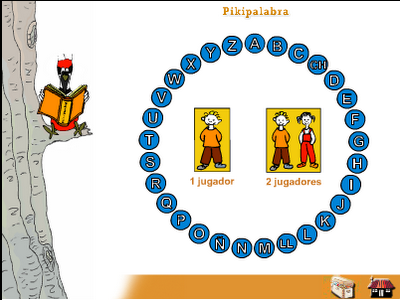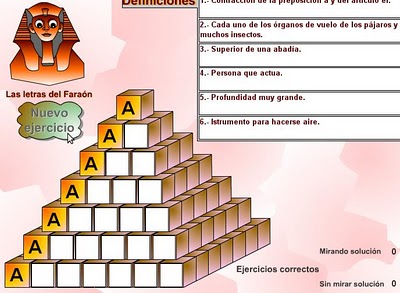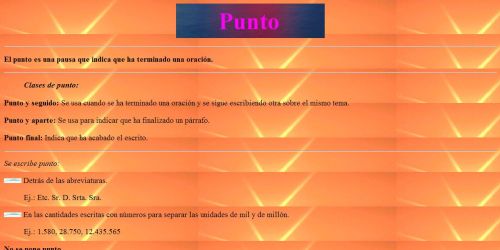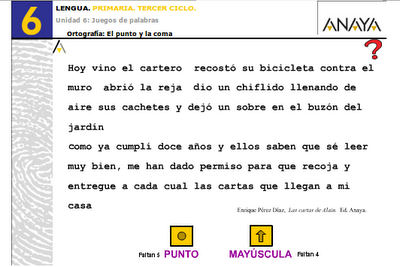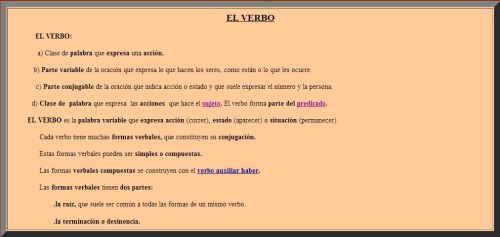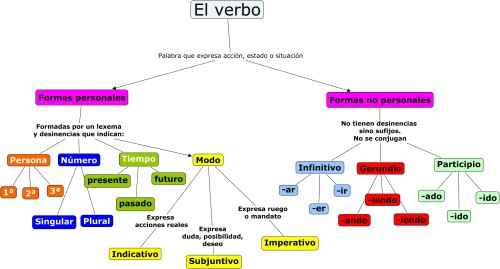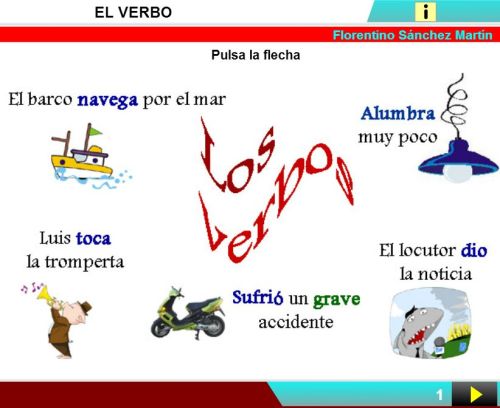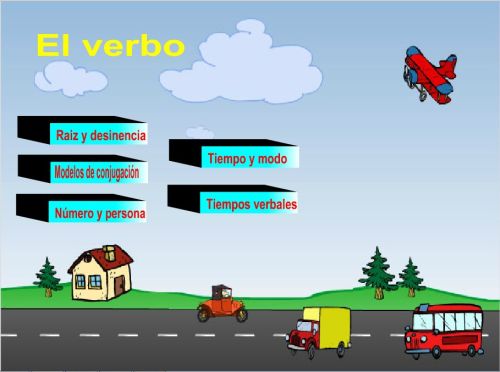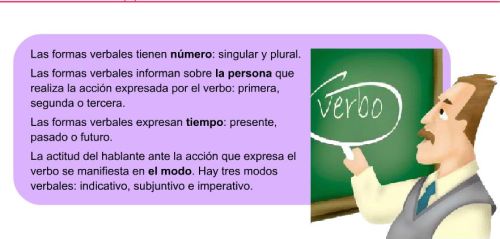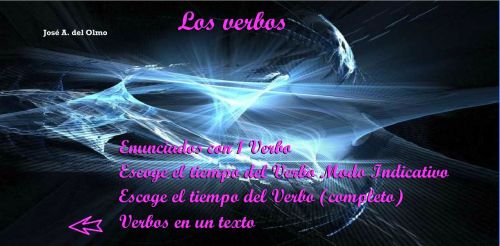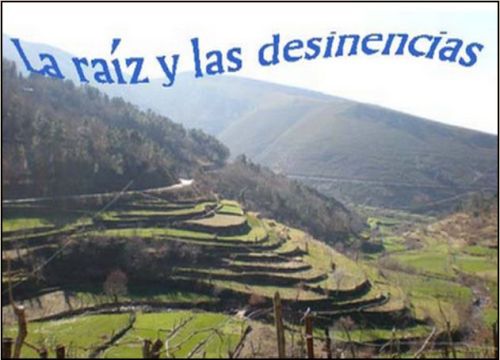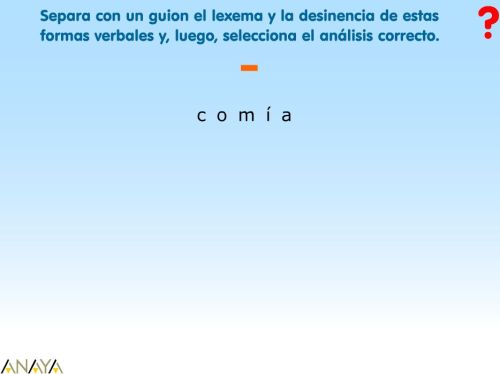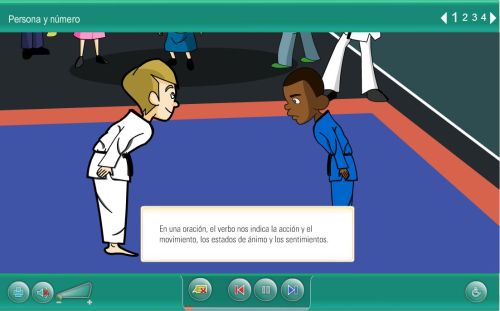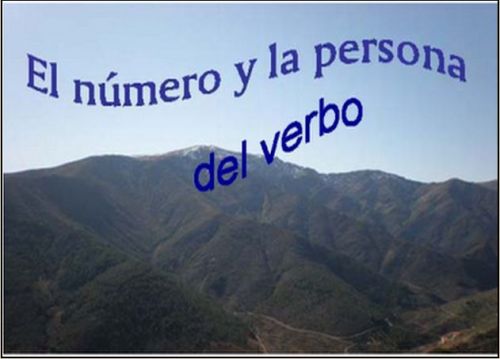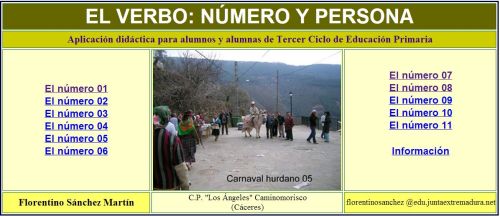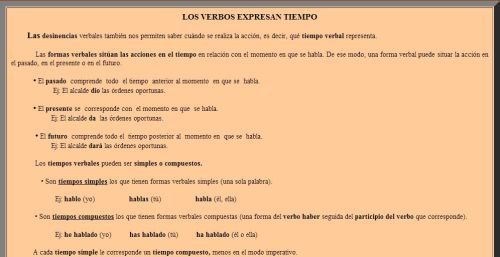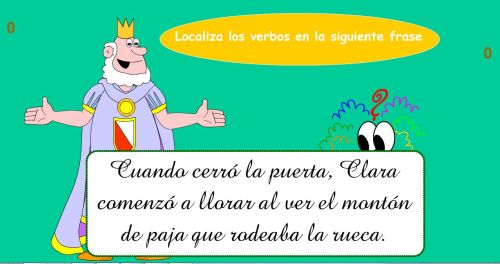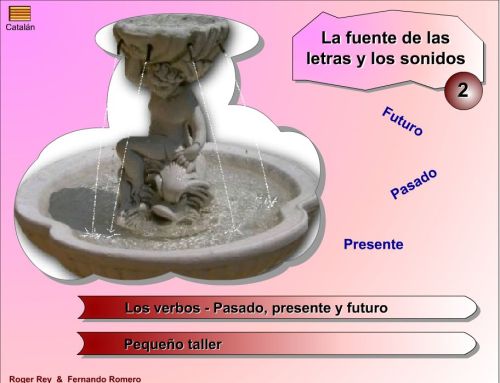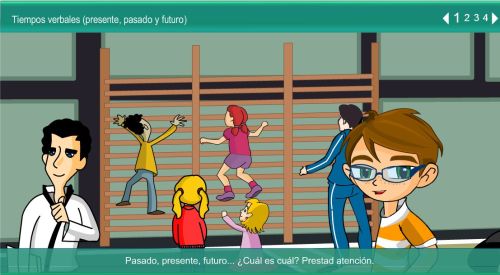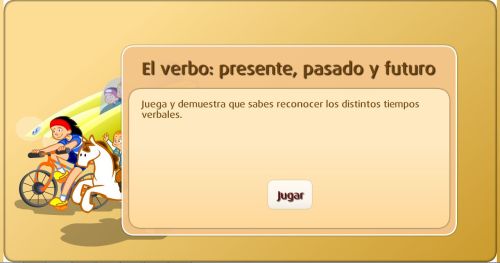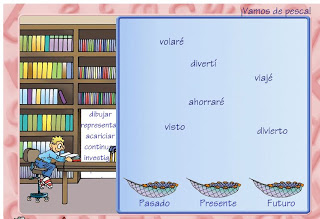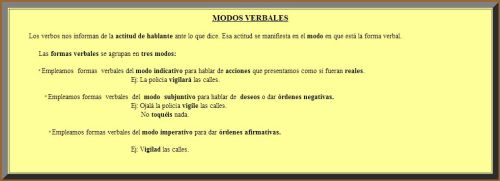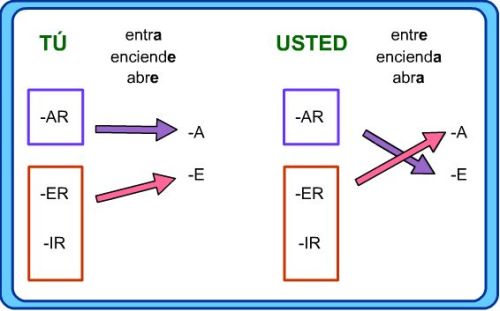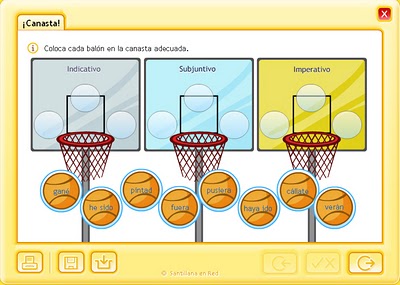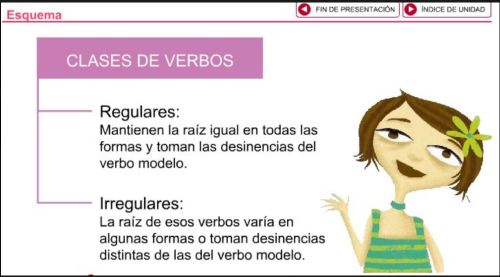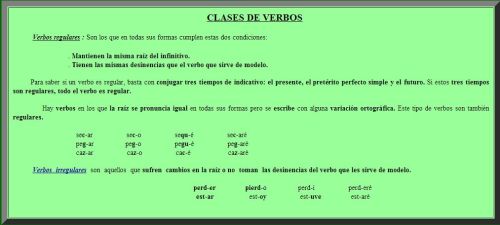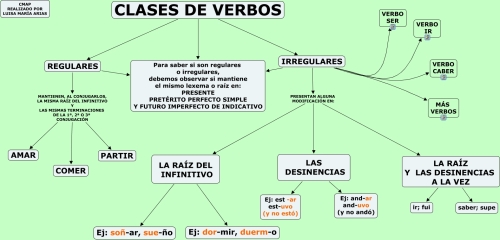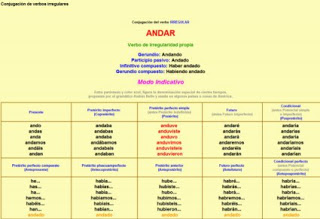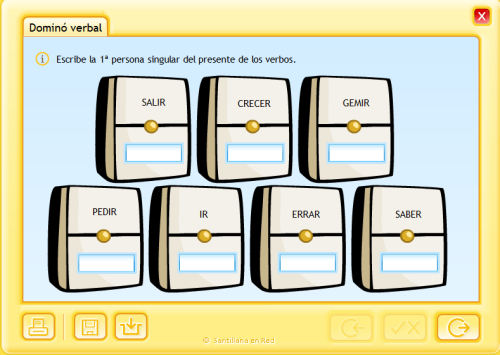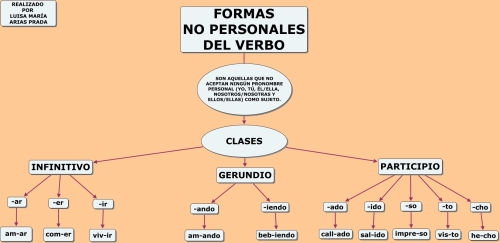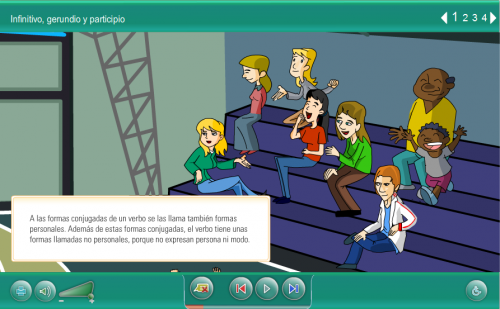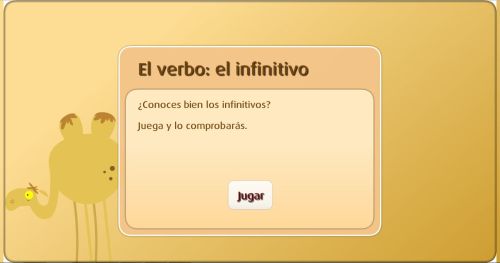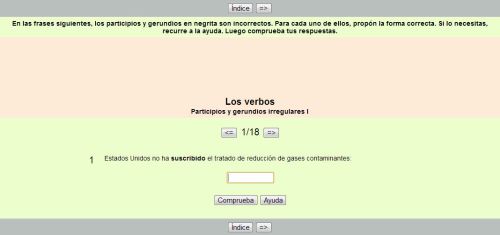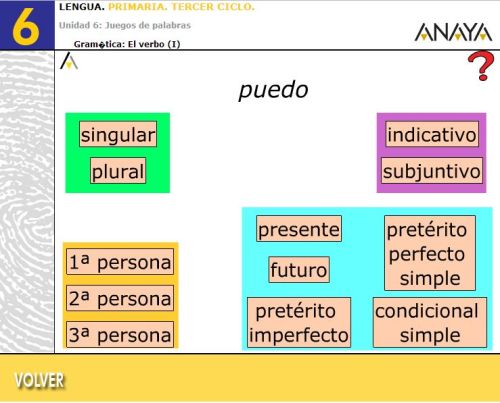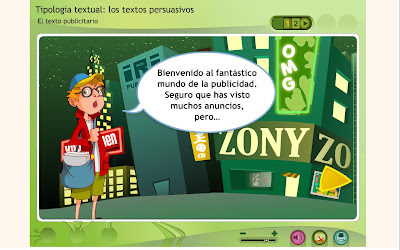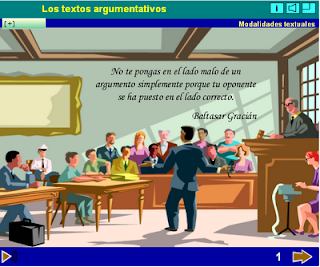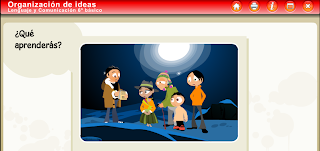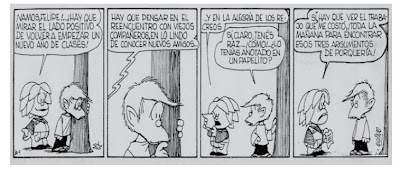Si quieres aventuras,
lanzate a la lectura
UNIDAD 6. UNA HISTORIA DE CACOS
En esta unidad estudiaremos:
- Lectura: Una historia de cacos
(Consuelo Armijo, BAM, BIM, BOM, ¡Arriba el telón! Ed. Miñón).
- Vocabulario: Definición de nombres.
- Ortografía: El punto y la coma.
- Gramática: El verbo (I).
- Expresión
escrita: Textos
publicitarios.
Definición de nombres.

¿QUÉ ES EL VERBO?
IdentifIca los VERBOS en los textos que propone la actividad
LA CONJUGACIÓN DE LOS VERBOS EN ESPAÑOL
Se llama conjugación de un verbo
al conjunto de formas que puede tomar éste cuando combinamos su raíz con
todas las terminaciones verbales posibles en sus tiempos presente,
pasado y futuro, tanto simples como compuestos.

RAÍCES Y DESINENCIAS
NÚMERO Y PERSONA
FORMAS VERBALES: EL NÚMERO. FORMAS PERSONALES Y NO PERSONALES
LOS TIEMPOS VERBALES
UNA ACTIVIDAD MUY FÁCIL PARA EMPEZAR
PESCA LOS VERBOS Y PRACTICA LOS TIEMPOS VERBALES
COLOCA EL TIEMPO VERBAL CORRESPONDIENTE

LOS TIEMPOS VERBALES
AUTOEVALUACIONES
MODOS VERBALES

PRACTICA CON EL SUBJUNTIVO
EL MODO IMPERATIVO

IDENTIFICA EL TIEMPO Y EL MODO DE LOS VERBOS
CLASES DE VERBOS
CONJUGACIÓN DE LOS VERBOS REGULARES
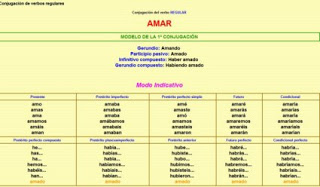
VERBOS REGULARES, IRREGULARES Y DEFECTIVOS
RECONOZCO CADA TIPO (REGULARES Y IRREGULARES)

FORMAS NO PERSONALES
Atendiendo a su persona y número
(1ª, 2ª y 3ª del singular o plural), los verbos pueden tener forma
personal (‘yo ando’, ‘tú andas’, ‘él anda’) o forma impersonal en
infinitivo, gerundio y participio (‘andar’, ‘andando’, ‘andado’).
ENCUENTRA EL INFINITIVO
PARTICIPIOS Y GERUNDIOS IRREGULARES
DESCUBRE LAS FORMAS NO PERSONALES

ANALIZA LAS FORMAS VERBALES

¿QUÉ ES EL VERBO?
IdentifIca los VERBOS en los textos que propone la actividad
LA CONJUGACIÓN DE LOS VERBOS EN ESPAÑOL
Se llama conjugación de un verbo
al conjunto de formas que puede tomar éste cuando combinamos su raíz con
todas las terminaciones verbales posibles en sus tiempos presente,
pasado y futuro, tanto simples como compuestos.
RAÍCES Y DESINENCIAS
NÚMERO Y PERSONA
FORMAS VERBALES: EL NÚMERO. FORMAS PERSONALES Y NO PERSONALES
LOS TIEMPOS VERBALES
UNA ACTIVIDAD MUY FÁCIL PARA EMPEZAR
PESCA LOS VERBOS Y PRACTICA LOS TIEMPOS VERBALES
COLOCA EL TIEMPO VERBAL CORRESPONDIENTE
LOS TIEMPOS VERBALES
AUTOEVALUACIONES
MODOS VERBALES
PRACTICA CON EL SUBJUNTIVO
EL MODO IMPERATIVO
IDENTIFICA EL TIEMPO Y EL MODO DE LOS VERBOS
CLASES DE VERBOS
CONJUGACIÓN DE LOS VERBOS REGULARES
VERBOS REGULARES, IRREGULARES Y DEFECTIVOS
RECONOZCO CADA TIPO (REGULARES Y IRREGULARES)

FORMAS NO PERSONALES
Atendiendo a su persona y número
(1ª, 2ª y 3ª del singular o plural), los verbos pueden tener forma
personal (‘yo ando’, ‘tú andas’, ‘él anda’) o forma impersonal en
infinitivo, gerundio y participio (‘andar’, ‘andando’, ‘andado’).

